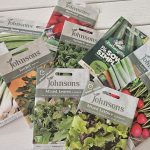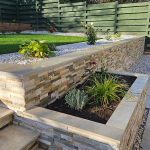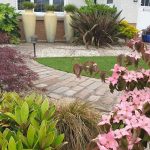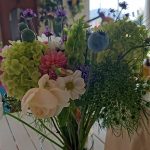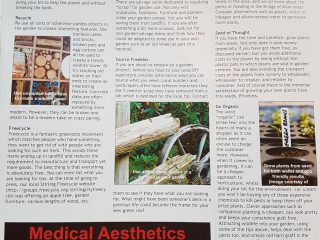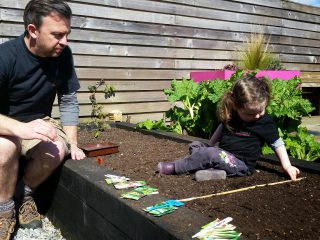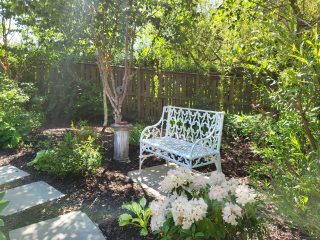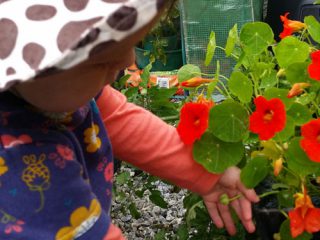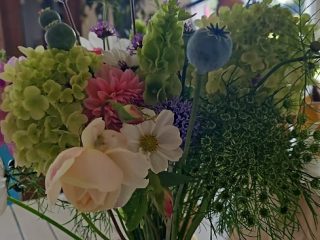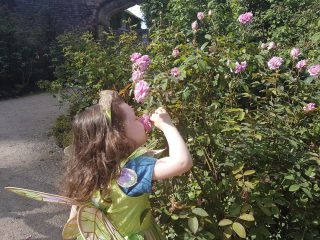Wild About Your Garden
Friday, 02 July 2010
Bio-diversity. Sustainability. Eco-friendly. They are all buzz-words in the world of gardening as more and more people realise that it can be cool to care. The United Nations have even declared 2010 as the Year of Biodiversity. No longer does having a wildlife garden mean that you just leave an area of your garden to go “wild” and inevitably become an eye-sore.
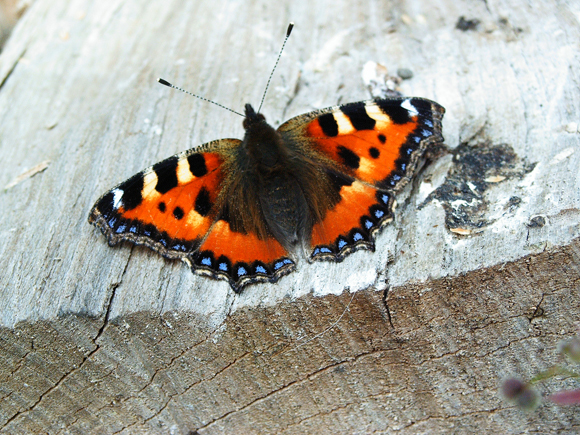
Having a wildlife garden can be truly beautiful
Even the Chelsea Flower Show this year featured heavily on wildlife gardens with one garden planted entirely with a wildlife meadow. Wildlife gardens can fit whatever style of garden you choose, from contemporary to traditional cottage garden. And even the smallest and most urban of spaces can attract the most surprising of visitors.
So, how can you create a wildlife garden and what, more interestingly, can you attract?
Perfect Planting
Planting should include native species and have some of the key features important to wildlife. Look at what grows naturally in the wild and what grows really well in your neighbours’ gardens. Native hedgerows such as beech, hazel or hawthorn will provide a haven for hundreds of species of wildlife.
Birds love winter berries so plants such as cotoneaster, viburnum, holly and skimmia are perfect.
Include plants that are efficient for bees to collect pollen from such allium, echinops and foxgloves as well as broad-leaved perennials which allow easy access for bees such as asters, sunflowers and echinacea. Avoid double flowers which make it difficult for bees to access pollen.
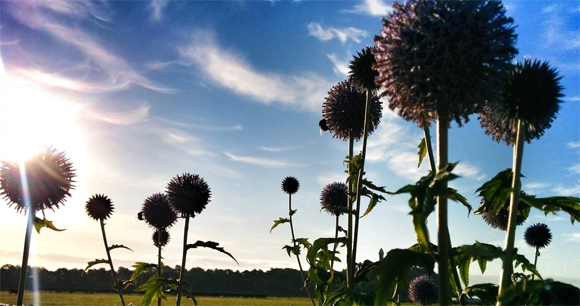
The bees loving the echinops in our garden
The world’s bee population is still in decline and it’s crucial we all take steps to reverse this trend. Einstein once said “If the bee disappeared off the surface of the globe then man would only have four years of life left. No more bees, no more pollination, no more plants, no more animals, no more man.”
Plants such as buddleja, lavender, scabious, forget-me-nots and lonicera (honeysuckle) are perfect for attracting butterflies into your garden.
Don’t deadhead plants as soon as the flowers go over. Instead leave seed heads which not only look beautiful throughout the winter but are also perfect for birds looking for seeds. Ideal for plants such as echinops, sedum and angelica.
Different species of trees and shrubs provide nectar and other food sources throughout the year so make sure you have a good mix of plants.
Grow climbers against walls to provide shelter for birds.
If you want to take it a stage further and if you have space, why not incorporate a wildflower meadow. The gold winning HESCO garden at the Chelsea Flower Show this year proved wildflower meadows can be beautiful as well as a haven for wildlife. Packets of wildflowers seeds or trays of plug plants are readily available from garden centres or online these days but make sure they originate from the UK.
Wildlife such as spiders, caterpillars, butterflies and moths, bees, birds and small mammals will all be tempted into your wildflower meadow. Nowadays wild flower meadows are extremely rare – we have lost 95% in the last 50 years. Planting one in your garden will really help local wildlife.
Water Wonderland
Incorporating some form of water feature into your garden is a great way of attracting wildlife. Water can be incorporated no matter what size or style your garden is and can be made child-friendly too.
If your garden is small then even a half barrel can be made into an effective water feature and will attract frogs and other wildlife which will feed happily on slugs and snails.
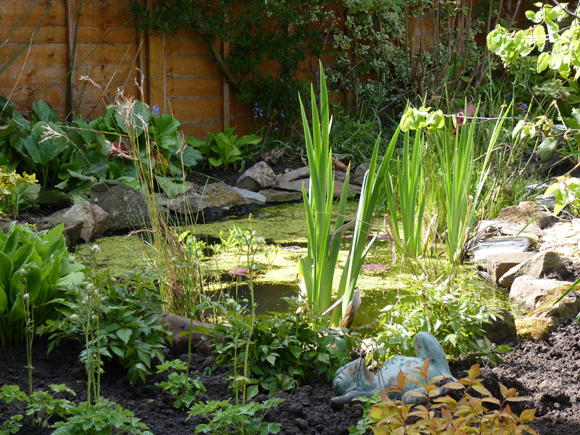
Water is a great way to attract wildlife into your garden
If your garden is a bit bigger, look at a larger pond. Incorporate “floating” stepping stones to make your pond very on-trend. Make sure there are sloping edges to your pond though so birds can bathe, frogs can spawn and hedgehogs can escape if they fall in. A mesh can be incorporated to make ponds child-friendly too.
Go Organic
Avoid using slug pellets and pesticides. Many are harmful to the “good” wildlife you are trying to attract. Instead look for alternatives. For weeds, hand-weeding, mulches, ground cover plants and weed suppressant fabrics will all help keep weeds at bay. And once you have started attracting wildlife in, they will do a lot of the work for you such as eating slugs.
Happy Habitats
Create the sort of habitats that are perfect for the wildlife you are trying to attract:
Put a nesting box in your garden. These can range from the traditional wooden boxes to boxes in trendy shapes and colours to suit all styles. Boxes will attract birds and possibly even bats. Many gardens have plenty to offer birds to eat but nowhere to nest.
Create a log pile somewhere quiet in your garden, perhaps hidden behind your shed. If you are lucky hedgehogs and toads may set up home there and help keep garden pests at bay.
Introduce a wildlife tower into your garden. It can be built out of old pieces of wood and the different sections incorporate different recycled materials such as bamboo canes, egg cartons and broken pots. The tower will provide a focal (and talking) point in your garden and be home to a myriad of wildlife.
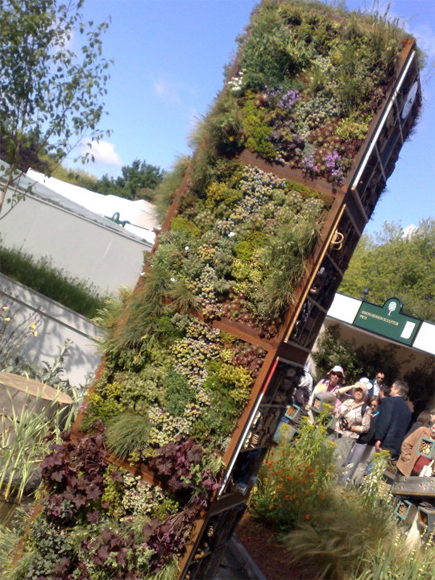
Water is a great way to attract wildlife into your garden
Include bird baths and bird tables in your garden to encourage our feathered friends to visit. Be careful where you site them though for curious cats…
Other easy additions are rock piles, a garden shed, a window box or even a simple hanging basket. All will entice wildlife into your garden.
Sustainable Gardening
Take simple steps to help our planet as well as saving yourself money:
- Introduce a compost heap for all your lawn clippings and dead-heading as well as your kitchen waste.
- Avoid using peat-based compost. Peat extraction destroys vital wildlife habitat.
- Include a water-butt somewhere in your garden. Not only do plants and wildlife prefer rain-water but it saves you getting the hose out.
So from lady-birds to lace-wings, hedgehogs to hoverflies, bees to butterflies or dragonflies to damselflies, gardens are a place both humans and wildlife can enjoy side by side.
We’d love to see pictures and hear stories of some of the wildlife you have tempted into your garden. Please get in touch with some of your tales.
All at Vialii
